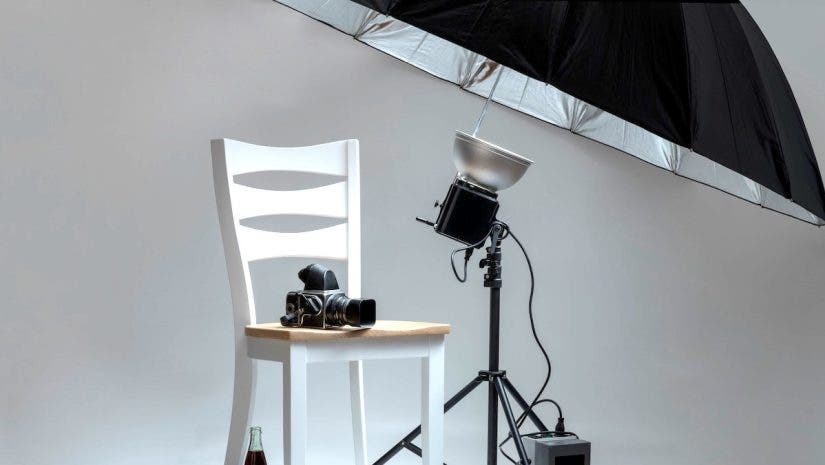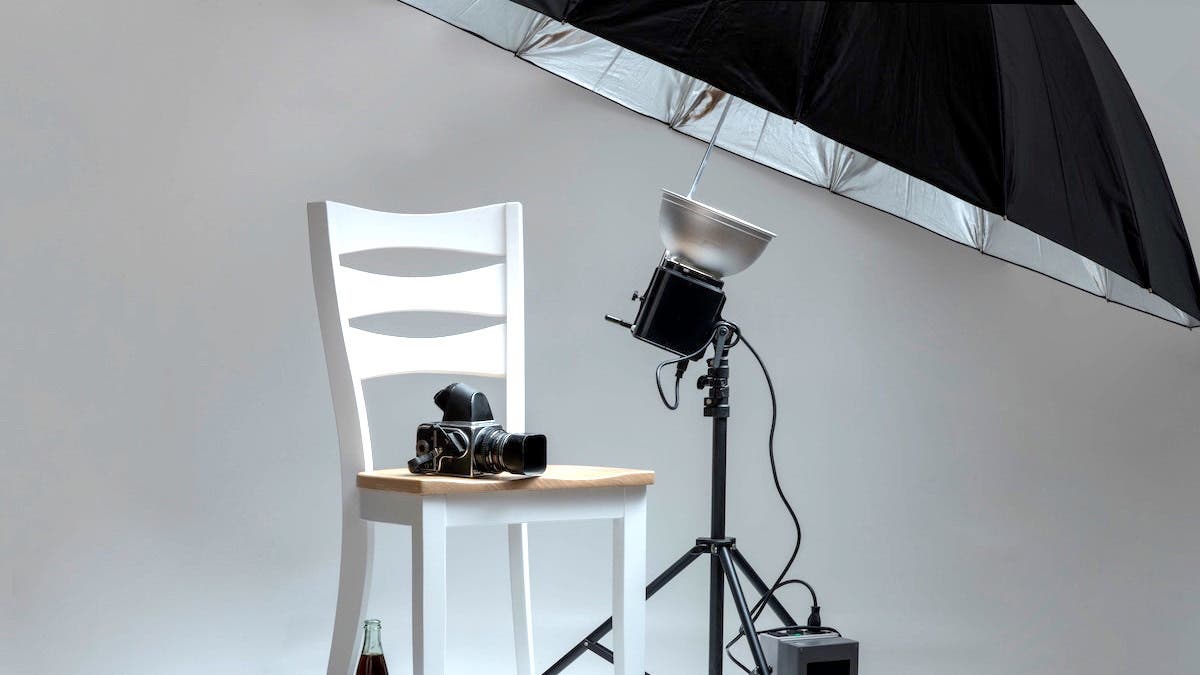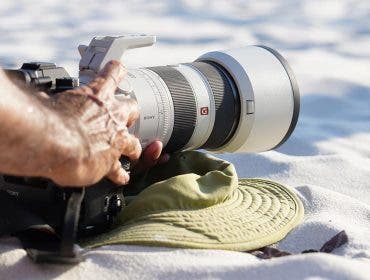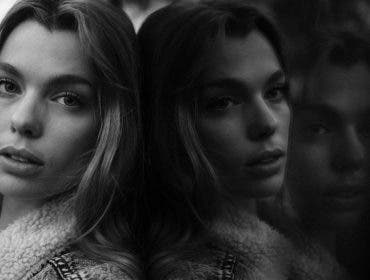Artificial light sources are versatile and help you create the composition you imagine, regardless of the available lighting conditions. However, artificial light can hardly resemble the warmth and naturalness of sunlight. Animated subjects (e.g., people, animals, and insects) may find it difficult to face an artificial light source. The best way to make the most of a single light source is to use a light modifier. A photography umbrella is the easiest to use and most affordable light modifier. Here is everything you need to know about incorporating photography umbrellas into your workflow.
What is a Photography Umbrella?
A photography umbrella is a much-appreciated light-shaping tool. It looks like regular rain or sun umbrella and folds like one too. But instead of repealing the rain or sun, a photography umbrella changes the properties of light coming from a light source. Often, it accompanies an artificial light source (e.g., strobe, speedlight, continuous light, etc.), although you can use a photography umbrella with sunlight, too.
Based on its properties, a photography umbrella may either reflect light, thus changing the light’s direction, or diffuse light, thus changing the light’s softness. Some umbrellas act like a softbox, spreading and softening the light, and others create a focused beam of light.
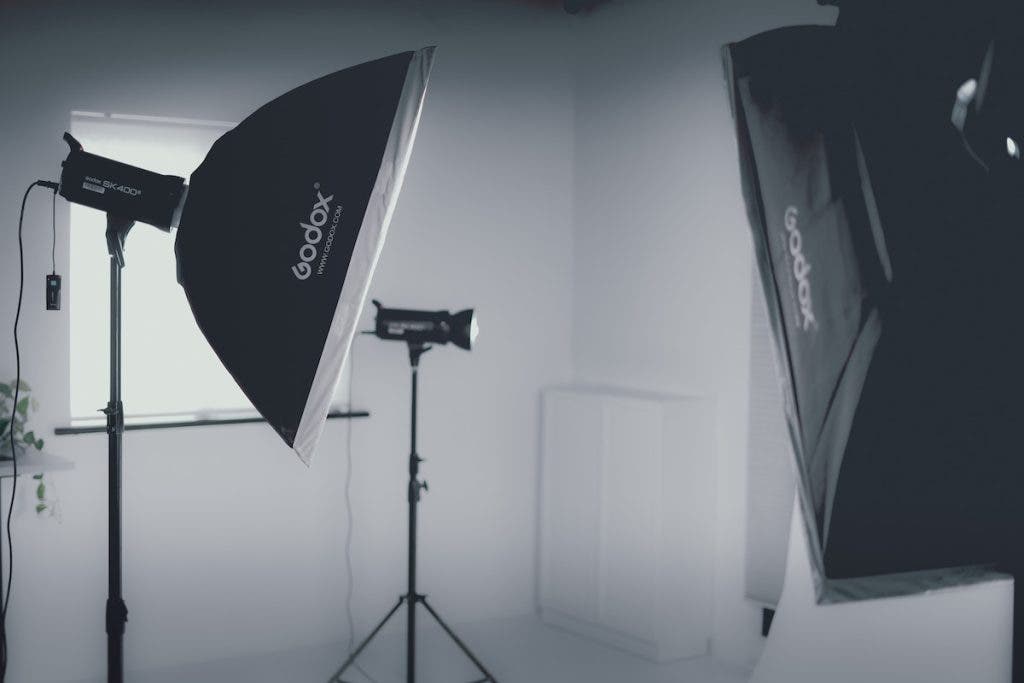
How to Use an Umbrella
A white shoot-through umbrella can be used as a large diffuser to broaden and soften the light. For this, the umbrella should stand between the light and the subject. If you work with a strobe, it most likely has a dedicated hole and knob to mount the umbrella. If you work with an external flash, you need a flash bracket with an umbrella holder. When using other light sources, simply place the umbrella close to the light and ensure it covers the entire light source.
The distance between the bulb and the umbrella influences the diffusion level. When you place it very close to the light source (e.g., mounted on the strobe or flash bracket), you get less diffusion and sharper shadows but minimal light spill (aka how much light reaches the subject by going around the umbrella). When there is a long distance between the umbrella and the light source, you get a more intense diffusion and softer shadows but have a higher risk of light spill.
A dark reflective umbrella can replace a secondary light source and illuminate the subject from a different direction. For example, you may want the primary light in front of the subject and the umbrella on an angle, reflecting light coming from the primary light and providing a fill light. With two umbrellas, you can create a 3-point lighting design using only one light source.
Another way to use a reflective umbrella is to place it facing the subject and point the light source towards the umbrella instead of the subject. The reflected light will provide enough illumination to take a good shot without having the subject look into a bright light. Especially when you photograph animated subjects or use continuous lights that stay on a long time, having an umbrella releases the model from light stress and helps you avoid startling the model, the red-eye effect, and photographing frowning people.
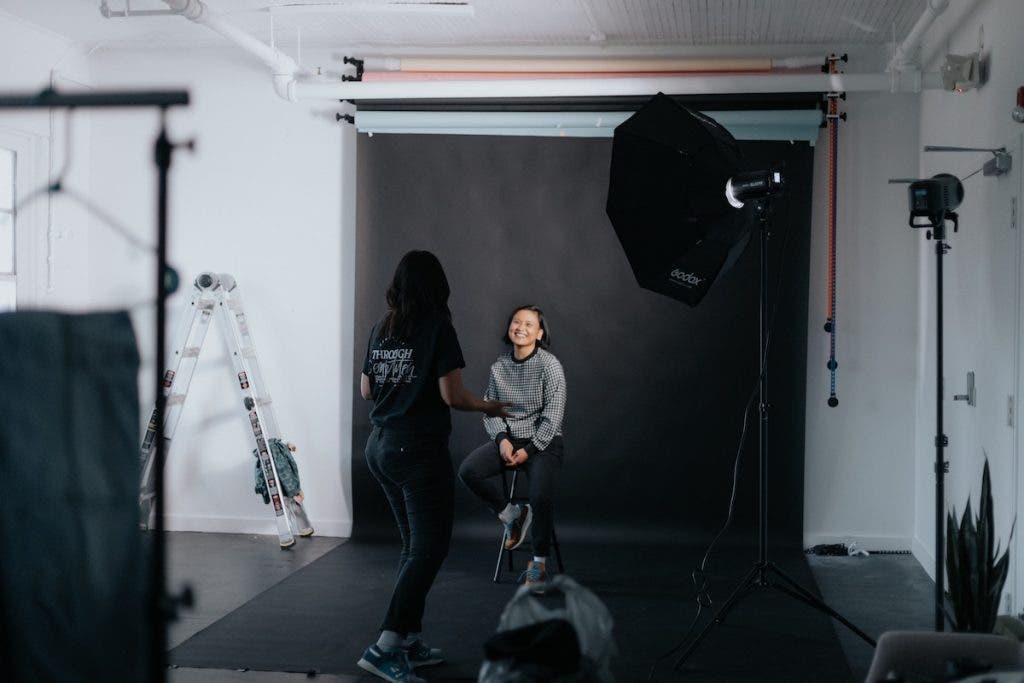
When to Use an Umbrella
An umbrella is useful whenever you use an artificial light source or work with a bright light available on location (e.g., sunshine, interior lights, etc.). It provides a quick and easy-to-setup diffuser, reflector, or both. Furthermore, it’s portable, lightweight, and affordable.
Studio photographers, whether portrait, product, or commercial photographers, use umbrellas to create a 3-point lighting setup with one strobe or speed light and surround the subject with a softer and more natural illumination. And because most umbrellas are large, the reflected light is broader and more evenly distributed.
An umbrella is also a must-have when photographing a model sensitive to light or heat. Animated subjects do much better when illuminated with reflected light instead of direct light. Ice cream will preserve better if it doesn’t stand under the intense heat of a strobe. Therefore, you may want to use an umbrella as a way to protect your subject.
But you may also want to use an umbrella to soften and diffuse the harsh light coming from a flash. For example, flash is essential for macro photography lighting. But firing a flash from a short distance creates uneven illumination, harsh shadows, and awkward reflections. If you use an on-camera flash unit, you can mount a diffuser on top of it. But if you use an external flash unit or a continuous light, you can use an umbrella. You may also want to consider placing the umbrella as a sun shield to protect your tiny subject from the bright midday sun.
Umbrellas are also helpful for portraiture because the soft light is flattering. It smoothes the skin, hides imperfections, and makes the eyes sparkle. If you do full-body or group portraits, choose a large-size umbrella.
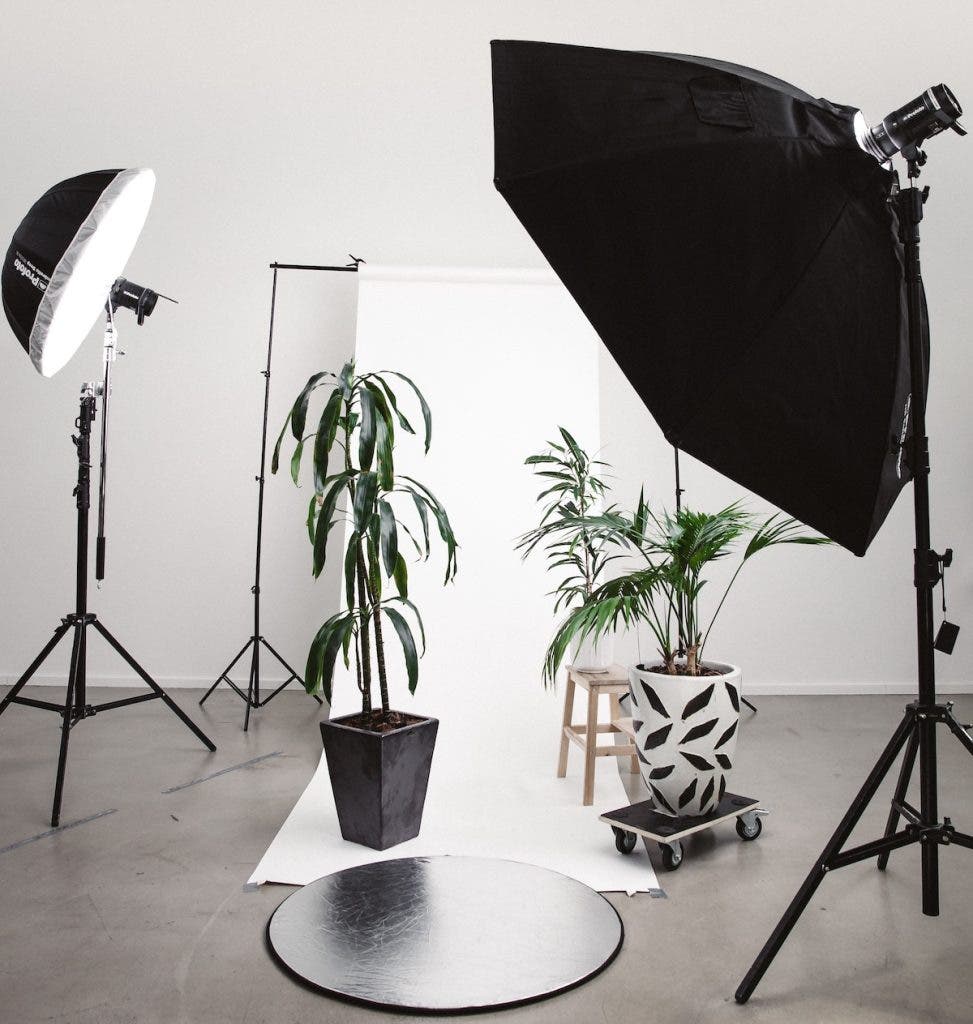
Types of Umbrellas
Photography umbrellas have different purposes based on color, shape, and dimension. As there is hardly one umbrella to fit all photo setups, learn the differences between umbrella types and choose the one that improves your workflow.
Color
A shoot-through umbrella is entirely white. A reflective umbrella has a white, gold, or silver interior and usually a black exterior. The silver interior is highly reflective and maximizes the output, creating a metallic, dramatic, and slightly cool aspect. The gold interior creates a warm, yellowish light. You can also find dual-purpose umbrellas, which are entirely white and shoot-through but come with black covers that transform them into reflective umbrellas.
Size
As a general rule, a large-size umbrella creates a softer light than a small-size umbrella. It also spread the light more and leaves no space for a light spill. A large umbrella allows you to create full-body portraits, photograph groups of people, or illuminate a large space (e.g., an interior for real estate photography).
A small umbrella, on the other hand, requires a less powerful light source, such as old speedlights and flash units, and creates stronger light. It’s useful for small photo setups, such as headshots, food photography, or product photography.
Shape
The shape is also important and refers mostly to the umbrella’s depth. Deep umbrellas (aka parabolic umbrellas) provide more control over the direction of light, less spread, and more contrast. They have a round profile and usually are large-size umbrellas. Shallow umbrellas cover a wide area and produce a soft and even spread light.
For particular purposes, such as shooting in low-ceiling rooms, you may look for special shape umbrellas, such as rectangular umbrellas. You may also take a look at hybrid umbrella softboxes, which can act both as a regular umbrella and a regular softbox just by setting up some accessories.
Best Umbrellas for Photography
As the best umbrella is the one that helps you take great pictures with no struggle, our shortlisted umbrellas provide options for every need.
Glow Easy Lock X-Large Deep White Fiberglass Umbrella (65″)
Easy to use, versatile, lightweight, and durable, this large, deep, white umbrella is compatible with most off-camera flashes, flash heads, and moonlights. The parabolic shape helps you control the light’s direction. The white interior provides smooth illumination, making the umbrella perfect for portraits, fashion and beauty editorials, and product photographs with sharp details and soft shadow definition.
Godox White Parabolic Umbrella (51″)
If you need a versatile umbrella for portraits and group shots, the 51″ White Parabolic Umbrella from Godox may be the answer. It’s a parabolic umbrella with a white interior, perfect for enhancing the ambient light and reducing contrast. The umbrella is affordable, portable, and simple, exactly what a beginner needs.
Flashpoint Solo Umbrella Portrait 1220M 1 MonoLight Kit
Featuring excellent build quality, the Flashpoint kit includes a 1220M Monolight, a 9.5′ black aluminum light stand, and a 40″ Glow umbrella with a removable silver/black layer. The umbrella provides a soft, diffused, evenly distributed light and limits light loss due to its black opaque cover layer. The Flashpoint kit is perfect for portraits, headshots, beauty and fashion editorials, and product photography. The relatively small size of the umbrella makes it difficult to use for full-body portraits or photographing large groups of people.
Westcott 7′ Silver Parabolic Umbrella
The 7′ Silver Parabolic Umbrella is a very large reflective umbrella, fit for outdoor and indoor use. The frames are made of fiberglass to provide strength and durability. The umbrella also comes with a carry case. The silver inner lining produces soft light. If you put the light source close to the umbrella, you will get a narrow beam of light. But if you position it at some distance or use sunlight, the resulting light will be broader and more evenly spread.
Profoto Deep and Parabolic 33″ Umbrella, Small, Silver
Small, practical, and easy to use, the Profoto Deep and Parabolic 33″ is a silver umbrella, with a deep parabolic shape. It gives you control over the light’s direction and allows you to focus the light on your subject. The umbrella comes with an optional diffuser for softer, more evenly distributed light.
Manfrotto 28″ Small All-In-One Umbrella with 8mm Shaft, Silver/White
If you need a multipurpose umbrella, check out the Manfrotto 28″ Small All in One Umbrella. You can use it as a shoot-through umbrella, white reflective umbrella, white reflective with silver behind, or silver reflective umbrella. It comes with a removable outer cover and a carry case. The umbrella produces light resembling daylight (5600K color temperature).
Conclusion
A photography umbrella is a requirement for any photo studio, especially when specializing in portrait or product photography. It provides many lighting design options at a reasonable cost and helps you understand what lighting equipment you really need. Photography umbrellas are versatile and forgiving, which makes them the perfect choice for beginners. Learning to work with light and use it in your favor is a huge step toward becoming a professional photographer. And you can try all lighting setups in the book with a single flash and umbrellas.
